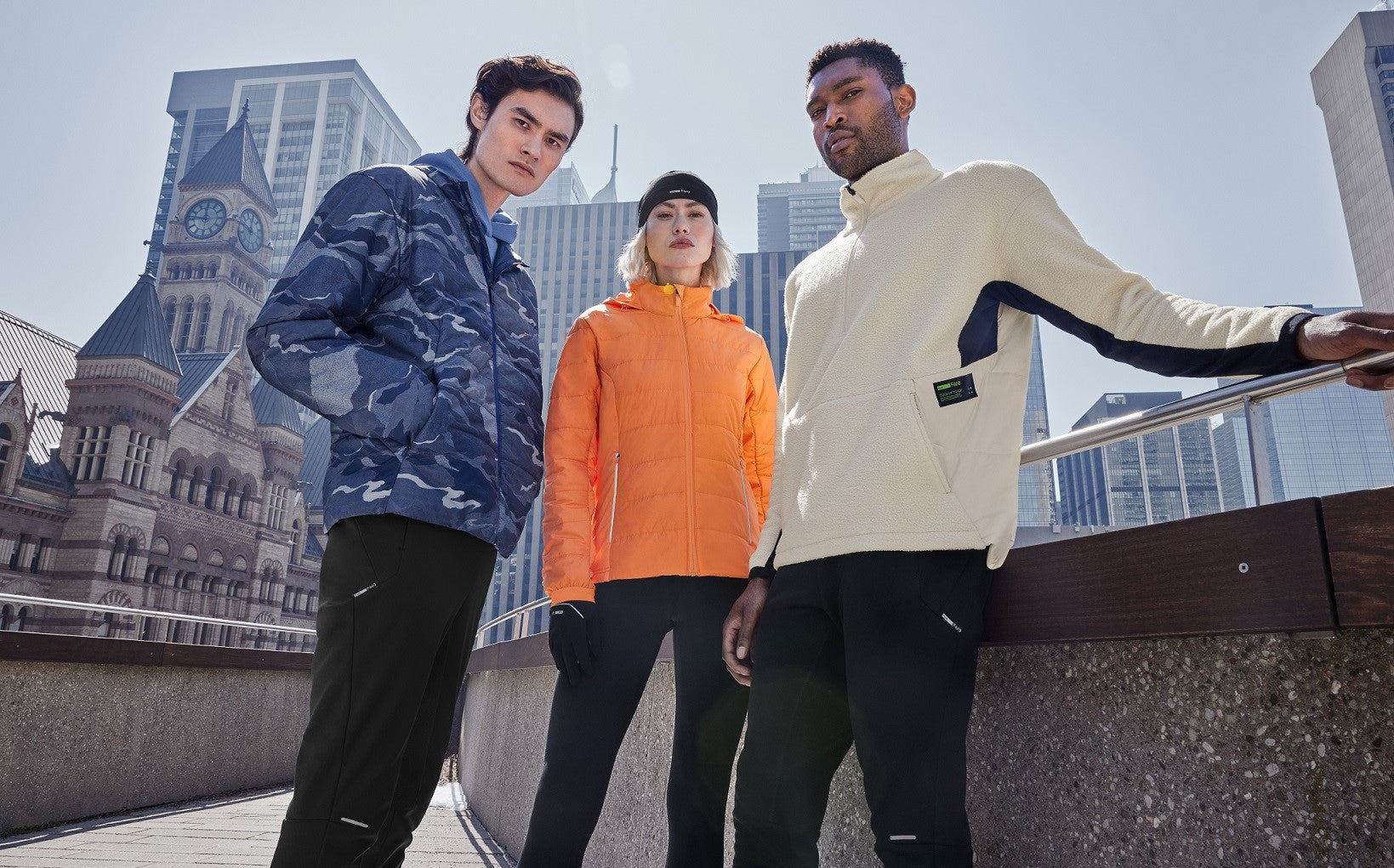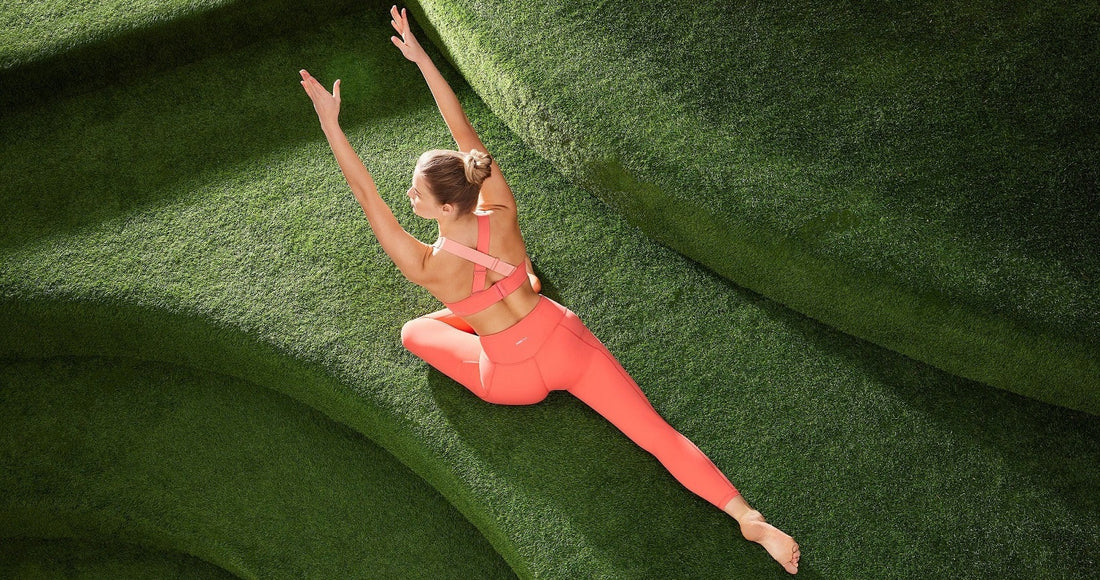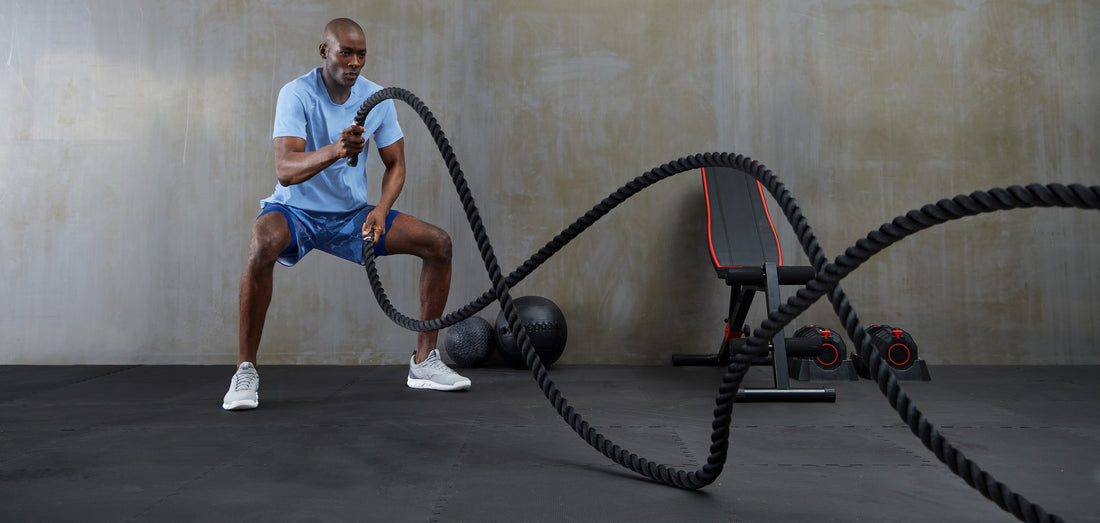Published on: Toronto Life
Psyching runners up for their next snowy dash
Winter running is an activity often reserved for dedicated athletes. For novices, a run through the snow and ice can seem intimidating, but there are ways to ensure your comfort and peace of mind so you can get out there and make the most of the season.
It all starts with the proper approach and equipment. Local experts and Forward With Design (FWD) are here to help prepare and motivate runners for their cold-weather dashes ahead.
Break barriers
With a positive attitude, the best gear and the right technique, winter running doesn’t have to be a pain. “The biggest barrier is getting out there in the cold and freezing for the first 10 to 15 minutes while you warm up,” says Michael Lin, head of the Toronto Running Rats, a group of marathoners that meets at Union Station year-round.
Stay cozy and dry with this sleek Women’s Winter Training Bodysuit or pair this hooded Aviate Stretch Jacket and soft Winter Training Legging.

Model wearing Forward With Design Bonded Warmth Jacket and Bonded Warmth Pant
An all-season sport
A good chunk of training occurs in the winter in preparation for spring races. “The only thing that can truly prepare your body for running is running,” says Lauren Roberts, a registered physiotherapist and owner of The Running Physio.
Roberts says taking breaks for multiple months and then suddenly jumping back into running is a surefire way to get injured. “You’ll also limit your performance and speed,” she says. It’s important to keep moving throughout the year to maintain your strength and stamina: “Our ligaments, tendons, bones, muscles and connective tissue need to be continually stressed to stay strong.”
Water reigns supreme
Winter air is dry, so hydration is as important when it’s cold as when it’s hot, says Jay Glassman, founder and race director of the Toronto Marathon. Your distance and pace determine how much water you should drink, but he suggests 6 oz every 15 minutes.
This sleek 24-oz Protein Shaker Bottle is great for water and an after-run shake.
Dress for high performance
Due to lower speeds and higher effort, the effects of colder temperatures are not as extreme when you’re running. Most runners tend to overdress, says Lin, who advises dressing as if it’s 10 to 15 degrees above the actual temperature.
Wear layers so you can remove items if needed as you’ll warm up fast when running.

Left: Wearing Forward With Design Men’s Outdoor 1/4 Zip Top and Outdoor Jogger. Right: Wearing Forward With Design Women’s Winter Long-Sleeve Tee and Winter Legging.
Your base layer, like this Women’s Butter Layer Long Sleeve Top, worn over supportive garments such as this High Impact Front Zip Bra, should be thin and made from moisture-wicking fabric.
Tights or pants should fit properly at the waist, like the Women’s On the Fly 7/8 Tight and Men’s Hybrid Pant.
A middle layer should include a slightly fitted jacket to act as an insulator, such as this Men’s Seamless Midlayer Hoodie.
The top layer protects you from rain and falling snow, and should be lightweight and breathable, like this hooded Men’s BLNCD Aviate Stretch Packable Jacket.
Aside from adding and removing pieces, says Lin, a lot of thermal management can be done using zippers and jacket vents, too.
Stay comfortable
Keep your head, feet and hands covered while out. Wear a moisture-wicking toque or beanie and a neck warmer, or, if the cold air is uncomfortable to breathe, a face mask or a balaclava.

Model wearing Forward With Design Primaloft Training Jacket, Reflective Run Beanie, Winter Funnel Top, Reflective Winter Run Gloves and Winter Legging
Eyewear can help keep wind, snow and ice out of your eyes. Lin suggests tinted sunglasses for bright conditions, and a clear or lightly tinted pair for cloudy days and night running.
Watch your step
Freshly fallen snow can hide potholes, cracks, raised curbs and ice. Shorten your stride, focus on your footing and slow down when rounding corners.
A pair of winter-specific running shoes can help improve traction. If the roads and trails are covered with ice, consider moving your training indoors.

Model wearing Forward With Design Winter Funnel Top, Reflective Winter Run Gloves and Winter Legging
Adjust your expectations
The first few times you run in the winter, you may feel sore as your body is adjusting to moving differently, says Roberts. Don’t expect to run at your regular pace when there’s snow on the ground.
Glassman recommends staying in your neighbourhood and carrying a cellphone, ID and money while on the move (check out this On the Go Hip Pack). And always ensure someone knows your route.
Though running may be a little harder when it’s cold, by the time warm weather arrives, you’ll have an extra spring in your step.
Join Forward With Design family to stay on top of all the sustainable initiatives and product launches.





